67 Powerful Benefits Of Social Media Marketing For Your Business
You have probably heard how powerful and effective social media is for marketing a million times before. But why is that so?
Simply saying “social media is great for marketing” doesn’t tell us a lot, right?
Sure, you can take a look at 51 Powerful Social media And Marketing Statistics You Need to Know and get a ton of information on the results social media can drive, however, it still doesn’t tell us a lot about the ways it can help you, and for which marketing objectives you should be using it.
Therefore, In this post, I’ll be listing 60 benefits that social media marketing has for your business, and tell you how you can use them to drive better marketing results.
Sounds good?
Then let’s dig right in!
1. Increase brand awareness
This is a benefit of social media that cannot be neglected. With billions of worldwide users across the various platforms, setting up your pages and starting to execute on your strategy will bring you brand awareness.
The best part is that when used correctly, you’ll be able to generate lots of brand awareness and get more people aware of your brand without having to pay expensive billboard, tv ads, or any other form of traditional marketing. You should see social media as a gateway to new audiences and potential prospects.
2. Improve brand loyalty
As a brand, brand loyalty is crucial for success, because what will otherwise end up happening is that people will buy from you once and go somewhere else. Or they’ll buy from you and then they’ll talk to your competitor instead.
When you increase brand loyalty, your audience will feel obligated, but they’ll also want to be loyal to your brand simply because of the fact that they think you’re awesome.
Ask yourself: are people ready to choose your brand over the completion – even if you’re more expensive and the competition has something that’s at least as good as your product? The power of brand loyalty and what customers do for a brand they’re loyal to is impressive. Just think about how Apple’s customers wait in line several hours just to get their latest phone – even if there might be phones at least as good – that’s the power of brand loyalty. You need to build it and you need to build it now.
The good news is that social media is a great place to start.
3. Gain valuable customer insights
People share lots of things on social media. Their opinions, thoughts, photos of their family, their kids, how they feel, and what they’re going to do tomorrow. For brands that take the time to listen will soon be able to realize that a part of what people are saying on social media is actually directly targeted towards them, you will also realize that there’s a ton of information that you can extract from your customers on social media and what they’re saying, to gain valuable insights into what they think about your brand.
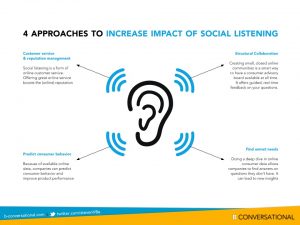
You probably already know how valuable customer opinions are, but the thing is that, still, relatively few brands realize that they can use social media to gain customer insights. What do they do instead? They spend lots of time and effort into creating a survey – a survey that your customers don’t want to answer, that they have to do in a place they don’t like.
People share their opinions about brands on social media because that’s where they like spending their time, and the best part is that they share their opinions without being forced, or encouraged to do so. Therefore, if you’re not already taking advantage of the information that you can extract from your audience that will give you right customer insights, you’re missing out. Big time!
4. Run targeted ads with real-time results
Organic reach is great on social media, except for platforms like Facebook where there’s virtually no organic reach left.
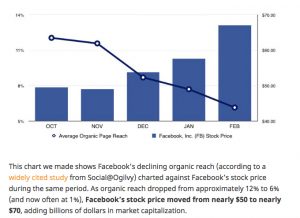
However, ads are an inexpensive way for your business to promote your content and get more eyeballs on it – while only reaching the people who truly matter for your brand, on a place where they like spending time.
Sounds great, right?
You can only work so much, and by running ads on social media, you can make your money work for you. All of the major, as well as many smaller social media platforms, offer ads, and many of them also offer a tremendous targeting system that makes your campaign laser targeted towards your target audience.
With Facebook ads, for example, you can target based on location, age, demographics, interests, behaviors, and a whole lot more. The best part is that you can measure your results with the help of the built-in analytics features that many social media ad services offer, allowing you to evaluate your results.
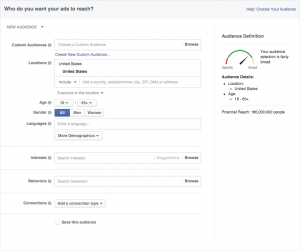
5. Humanize your brand
There’s no doubt about it: brands benefit from humanizing their brand, however, the only catch is that it’s difficult to do, and it is especially difficult to do for stiff and conservative brands. Luckily, social media has opened up a whole new world and new opportunities to humanize their brands.
People don’t want to buy from a faceless brand, do they? And the truth is that people care just as much about who they’re buying from, as what they are buying. You don’t need to push the CEO forward in front of your social media audience as some kind of martyr, however, it starts with developing a brand message and a personality on social media that resonates with your audience. When you’ve done so, you need to ensure that your brand message is the same across platforms.
People expect you to be the same person if they meet you at work or at the supermarket, and the same goes for your brand.
When you humanize your brand, people will have an easier time resonating with you, and they’ll be far more likely to buy from you.
Just look at the tremendous success Wendy’s have had by developing a sassy and unique brand voice.

6. Generate high converting leads
Social media has proven to increase sales time and time over. In fact, In a study from 2015, marketers identified social media as the most effective way to identify key decision makers and new business opportunities. Moreover, in another study, it was found that nearly 75 percent of companies that engaged in selling on social media reported an increase in sales in 12 months. That’s quite impressive, isn’t it?
And I promise you. factoring in the cost of social media, there’s no display or tv advertising that’ll even come close to those numbers.
7. Provide extraordinary customer service
Are you on social media yet?
Do you care about your customers?
If you answered yes to the second question and no to the first one, then what the hell are you doing not using social media when over 67 percent of consumers go to social media for customer service. If you aren’t there to meet them, what do you think they’ll believe and think?
They will wonder if your brand even operates in the 21st century, but even worse, they risk becoming a disgruntled customer when you can’t provide them a great customer service on a platform where they like spending time. Moreover, you also risk them going to their friends and telling them about their experience, and that’s no good!
When so many people have social media, you should get the hint and start serving them and what they want. Not what you think is most convenient – telephone and email, which, in fact, most customers hate. Think about it: Do you enjoy contacting brands through phone?
It’s painful and time-consuming if there’s a line of 424645623 people before you, and it’s still painful even if there’s just one.
Moreover, a study by Nielsen has found that 33% of customers even prefer to contact brands using social media rather than the telephone. But the catch is that people aren’t just expecting responses. They expect fast response times and 24/7 support.
And if you are able to deliver this, your customers will greatly appreciate you. In fact, Aberdeen Group shows that companies engaging in social customer service see much bigger annual financial gains (7.5 percent YOY growth) vs. those without (2.9 percent).
Therefore, you need to put great effort into customer service, but also customer engagement and relationship building.
Your goal should be to never have a disgruntled customer, but if you do, it should be to solve it as soon as possible. And where is this best done?
On social media! Where your customers actually want to spend time – their safe zone.
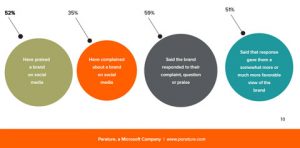
Do what your customers want you to do.
Specifically, 95% of Millennials expect brands to have a Facebook presence. Also, 87% of Gen X’ers (30- to 44-year-olds) and even 70% of those ages 45 to 60 think brands should, at the very least, have a Facebook page. While consumers reduced expectations by about 10% for Twitter presence, they dropped expectations even further for Instagram, LinkedIn, Pinterest, YouTube and Google+. Only about 50% of those polled expect brands to have a presence on these social media platforms.
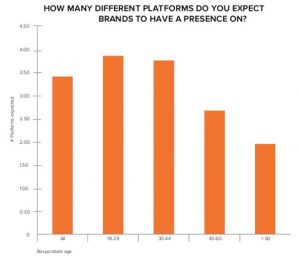
Social media is no longer an option or something that’s left to the second thought. If you want to make your customers happy, and always strive to please them, then jumping onto social media is a step in the right direction.
People expect you to be there, so be show up! And be ready to engage with them!
8. Stay top of mind with your customers
Social media is on 24/7 365 days a year. It never sleeps. This allows you to always stay in touch with your target audience and communicate with them regularly and often. The best part is that in today’s world, people are starting to develop banned blindness, causing them not to remember a display ad they saw just seconds ago, and display ads, in general, are losing efficiency.
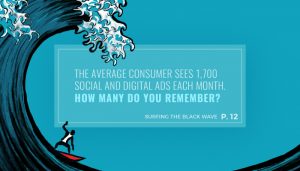
What does this mean?
It means that your audience will tune out and ignore the ads that you present in front of them.
But with social media, it’s different. With social, you can stay in front of your audience all the time, and engage with them even if they’re not ready to buy right at this second!
9. Increase website traffic
Okay, this is a benefit of social media we cannot deny.
And I am sure that many of you will be glad when hearing this.
The truth is that social media has a tremendous power in driving traffic to your website. And the best part is that it isn’t just any traffic. It’s relevant and targeted traffic, consisting of your target audience. Sounds interesting, doesn’t it?
What’s more, social media does not only allow you to drive traffic to your website, but it also affects your search rankings, thus boosting your website long-term.
The best way to drive more traffic is to have something that actually tempts your audience to visit your website. Simply including a link in your profile bio just won’t cut it. You need to tell stories, share visuals, and create engaging content in order to intrigue your audience to click through.
What’s more, by creating campaigns where social media and your website cooperates effortlessly, that’s when you are able to drive the most traffic. For example, you can set up a giveaway and announce it on social media, and in order to join, people need to visit your website and sign up.
The truth is that social media not only boost direct traffic, but it also improves your search engine ranking. And when your search engine ranking improves, you’ll rank higher in search results, and ultimately, you’ll get more organic traffic.
In case you haven’t gotten started with SEO and made search engine optimisation part of your marketing, now is the time, and make sure you make social media part of your efforts to improve rankings.
Matt Cutts from Google talks about how social media affects search engine ranking, and it’s not necessarily the way you think…
Social media marketing affects your search engine ranking both directly and indirectly. The truth is that when you get more people to your website through social media marketing, some of those people might link to you, which in turn leads to an improved search ranking.
But what’s also affecting your ranking on social media directly is so-called social signals. If Google sees that a thousand people are sharing your post, it sends signals to them that you are popular and that people are appreciating the content you share, which in turn can lead to a higher ranking.
But you should have in mind that Google has admitted that they look very little, if any, on your follower count simply because they know how easy it is to fake and manipulate.
A study by Social Media Examiner states that more than 58% of marketers who have been using social media for one year or longer still see improved search engine rankings.
When you use social media to improve your rankings, you can boost your website traffic and the number of prospects that find to your site for a long time to come.
The foundation to driving traffic, and in this case, using social media to affect your site’s ranking in search engines, which ultimately lead to an increased website traffic, is to create quality content. After all, Google’s number 1 Goal is to present the highest-quality result in the top search result on Google, so you’d expect them to have the same wish for social media.
Because they know that when people share high-quality content, people will share and engage with it. And that’s the reason why they focus on shares and interactions rather than anything else Another way to boost your SEO with social media is obviously to team up with industry leaders and influencers.
These individuals have a huge audience which will engage with your post like crazy, which will, in turn. send even clearer signals to Google.
10. Research your competitors
Many of your competitors are probably using social media.
Aren’t they?
With social media monitoring and competitor research, you can get access to valuable information about them and their audience. By looking at your competitors and what they are doing, you can always stay one step ahead.
Entrepreneur Andy Frisella often talks about how you should focus on your own business, and don’t pay too much attention to your competitors. However, he also says that if you’re going to look at your competitors (which you should regularly), you have to one-up them all the time. That’s the only way you can ever become better than them. If they are launching a campaign with a fun video, you create an even larger campaign with an even higher quality video that appeals even better to your audience.
By looking at your competitors, you can learn a lot. You can let your competitors be the lab rats and see what works and what doesn’t. That way, you can take the best parts of their social media strategy and skip the not so well-working ones. You can also work to fill the gaps that you see they are missing and find an opening in the market.
11. Steal customers from your competitors
Remember that I said that many people take it to social media to complain and receive customer service?
Well, did you also know that while you should provide excellent customer service, there are tons of brands on social media that fails in providing this?
It’s true!
And I’ve seen it so many times that I cry inside when I see a brand not managing their customer service on social media in the right way.
But do you want to know the best part?
The best part is that if your competitors don’t have the resources or think it’s important to manage their customer service on social media, it means that there is a tremendous opportunity for you to jump in and engage with the customer instead. because after all, your competitors’ customers can be your potential customers because ultimately, they are your competitors for a reason – because you’re competing of the same customers.
If you take your time to look at your competitors and the messages they receive, you might find that many of them haven’t even received a response. This, of course, varies from brand to brand.
When you do find someone who seems disgruntled and hasn’t received any help, jump into the conversation and try to help them! The customer obviously has a problem, so take your time to ask if you can help them solve that problem.
And because the customer is disgruntled and feels like they’re treated not with respect, they’ll more than often jump on the first opportunity to they get to never do business with the brand again.
In fact, 91% of unhappy customers will not willingly do business with you again.
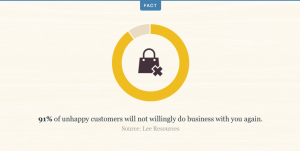
12. Distribute content fast & easy
Sharing content on social media is tremendously easy. In fact, sharing something only takes a few seconds. Back in the days, marketers struggled with getting information and content out to their audiences quickly, and the problem was that ”quick” was referred to a week.
Getting your own billboard ad up in town wasn’t something that was done in a few minutes. More so, several days or even weeks.
All you need to do with social media though is to produce content and share it. And you can share it exactly when you want and how you want.
13. Geotarget
As a brand, you want to reach the right audience, and for many, this means an audience within a certain geographical area. Geotargeting is extremely effective because it ensures that you only reach the people you want to reach, and not wasting a dollar more on people outside of that geographical area that you are interested in. This does not only go for paid ads on social media either.
You can, for example, distribute content in particular groups, target Twitter messages to followers in specific countries, and identify when people from different locations are online so you can reach them.
14. Make your brand an industry leader
Being an industry leader in social media means lots of things, of course, lots of benefits.
There are not many places that allow you to establish yourself as a thought leader as social media, however, that is not to say that you don’t need a strategy and work hard to achieve that.
To become a thought leader, you need to share relevant content and share your expertise with people within your industry. after all, if people don’t know that you’re extremely knowledgeable about the industry you’re in, you’ll never establish yourself a leader. Take part in discussions and become a go-to source by responding to every single question people might have.
When you’ve established yourself as an industry leader, you will always be on top of people’s mind when thinking about the industry you’re in, or when they have a question that need answering.
The best part is that as a brand, that means that you’ll be the first brand people think about when considering buying something related to the industry you’re in.
15. Manage your reputation
People will talk about your brand on social media regardless of whether or not you’re active on there or not. They’ll also talk about your brand whether you want it, or don’t want it.
Of course, much of what is being said is positive, and that’s great, but just leaving everything that your audience writes without interacting with it is not a recipe for success.
First off, you need to engage with what they are saying about your brand, and you need to do it quickly. Note that it doesn’t matter if it’s negative complaints or positive endorsements. They should all be met by you.
Doing this shows that you care about your audience and what they are saying. When you’re doing it to the people who write positively about your brand, you’ll increase the chances of them doing it again because they feel acknowledged and appreciated, and when you do, you’ll gain more exposure for your brand.
And the best part about this is that 92% of people trust peer recommendation so the compliments you are receiving hold a lot of trust and value.
Of course, identifying all the people who are talking about your brand is difficult. Some people might mention you directly, others might use your branded hashtags while some people won’t mention you at all.
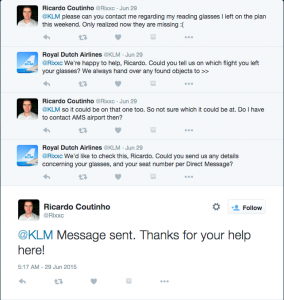
To identify the conversations that are going on around you, you can use Twitter monitoring to look for tweets including particular keywords, you can look at your mentions across the different social platforms and you can look at your brand name in hashtag form, as well as common misspellings of your brand name. You can also use tools like Sprout Social to monitor mentions of your brand name, which allows you to quickly respond to any messages by your customers.
If a customer is disgruntled yet doesn’t receive a response, there’s a risk that your competitors will use the method that I mentioned above. And even if you do, there’s a tiny chance that they’ll return to your brand unless you respond and make things right again.
And you want that, right?
You can also use social media to monitor discussions about your brand.
There are lots of discussions taking place on social media, and I am not talking about individual social media posts. I am talking about groups and communities where people are taking their opinions and thought, and share them with a bunch of other people who are also into the industry you’re in.
Similar to listening to your audience, the whole purpose of listing to the discussions that are going on about your brand is to understand what your customers think, get insight into what they think you can do to approve, as well as acknowledge criticism and improve upon that.
What people say is extremely valuable, because after all, they are the ones who are in contact with your brand every day, out in the field testing your products or service. In other words, it’s hard to find your own flaws, but asking people from the outside mention them will be as easy as 123.
16. Boost customer engagement
Customer engagement is the single most important thing to success on social media, according to me. I’ve talked about the importance of engaging with your audience when they complain or write something positive, however, because engaging is so crucial for success, you need to take every single opportunity you can get.
Because if you’re not engaging with your audience, you risk losing them forever.
According to a report from Gartner, churn can increase by up to 15% if you fail to respond to customers on social media.
On social media, you need to take every chance to engage with your audience, but you should also take the opportunity to engage them.
Do you understand what I mean?
Well, you shouldn’t just wait for your audience to make the first move. By being the one who takes the first initiative to a conversation, you show that you are more than happy to interact with your customers and when you do, they’ll come back!
Why should you engage your audience?
Well, it’s almost self-explanatory, but when you engage your audience, you make them more loyal. When they’re more loyal, they’ll come back to your brand, thus resulting in the fact that they’ll always have your brand in mind – this also means when they need to buy something.
When you engage with them, you also increase their trust in you, and when they trust you, they’re far more likely to buy from you.
Think about it. would you buy something from a brand that you don’t trust?
Didn’t think so.
17. Build (customer) relationships
Engaging with your audience ultimately leads to customer relationships, and that’s when you’ve really reeled them in and introduced them to your nice little family. When you build customer relationships, you’ll notice that many of the people will become loyal brand advocates who promote your brand completely for free. Something that is important to realize is that social media is not a place for you present ads and marketing pitches in your customers’ throats, which unfortunately many has got all wrong.
Instead, social media is a place where you can build and strengthen your customer relationships and enrich the customer experience. When you bring value to your audience by engaging with them and exchanging experiences and ideas, you open up a stream for better dialogue between your brand and your customers – something that is greatly appreciated.
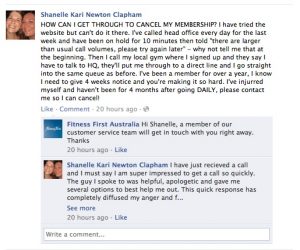
Of course, this is something that traditional marketing can only dream of doing.
When setting up a huge billboard ad, can people interact with it?
Ehm, not really.
With traditional advertising, you’re more so advertising to people rather than for them, by simply interacting with them and making sure they always have your brand top of mind.
Let’s not forget that social media is extremely cost-effective.
Probably not the first time you hear this one, but it’s true! Social media has time and time over been able to show for incredible results with an ROI that very few marketing sources can beat. And results that traditional display ads can only dream about.
There’s no doubt that social media is in the top.
A reason for this is due to the incredible targeting that social media ads offer. Of course, you can work with social media organically and still only focus on your target audience, but that’s a different story.
When running a TV ad, you have very little information about who has seen it. If you’re selling makeup, chances are, the vast majority of people who sees your tv ad will be people outside of your target audience who couldn’t care less about your makeup.
And regarding the people who are within your target audience, only a small portion will take action after having seen the ad.
What does this mean?
Well, first off, it explains why traditional display ads are highly cost-ineffective and are continuing to lose efficiency as fewer people turn to their TV.
The main reason why display ads are so expensive is because you’re paying ”per view” (the price is normally estimated on how many people who generally watch) and a wastage becomes inevitably because what you’ll end up doing is paying to have your ad shown to people who have absolutely no interest in your brand or industry.
Of course, this isn’t a problem that social media has. With social media ads that allow you to target your ads down to age, interests, job titles and income, what you’ll end up doing is only paying for the people who are your prospects and potential customers, thus resulting in a much higher ROI.
Of course, just creating a profile is free on almost every social media platform. And you can work with organic marketing and generate impressive results by just putting our great content, but if you want to succeed, you need to find your target audience organically and know how to reach them.
18. Manage crises
The last time you wanted to get the latest news from a brand, did you go to their social media to see if they had posted something?
Many people do, including me!
What does this mean?
Well, almost all brands get struck by crisis sometime – some brands more often than others. And an important part of how harmful the crisis ends up being on your brand is how you deal with it. Luckily, social media is the perfect tool to manage crisis and try and decrease the harm a crisis has on you.
Crises come in many forms and shapes, but social media is one of the best ways to deal with them no matter what type it is. To deal with a crisis in the best way possible, you need to have a crisis management plan in place.
When making it your number one source for further information about what is going on, people can quickly get their questions answered, and you can announce a public apology.

19. Quick communication
Quick communication is important for many reasons, nonetheless for crises. People need information fast about what is going on and what you are doing about it.
It is especially important to be able to be quick when dealing with customer service, not only on social media but wherever you meet your audience and help them out. People expect it to go fast, and if you can’t give that to them, they’ll go somewhere else. The last thing you want to do is keep your audience waiting because you risk losing them forever.
Social media is a fast-paced landscape, and it’s important that you are aware of that right from the word go. You cannot afford to read a customer message, contemplate on it a few hours and then get back. Ideally, people would love if they could get a response within 10 minutes, and while obviously, it’s impossible to provide that all the time, there are brands who are very good at it.
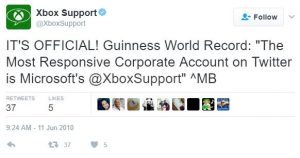
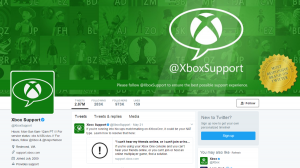
20. Improve your reputation
Social media is tremendously powerful for improving your brand reputation, however, what is effective can also be harmful. In other words, social media can boost and improve your brand’s reputation, but it can also harm it unless you’re using it the right way.
The best method to boost your reputation on social media is to show your audience that you care about more than money and profit and that you care about your customers. You want to show your audience that you have a passion for making the world a better place, even if just a tiny notch, and you want to give back to your audience.
The best way to get this goodwill is to get your audience to spread positive words about you, but this also means that you need to build strong relationships and engage with them.
Do you see how engagement and relationship building is connected with social media and that it plays a central role in success?
21. Laser targeted advertising
I’ve touched upon how social media can drive such high ROI as a result of the targeted advertising you can run because you have so much information about the people who are actually seeing your ads and organic posts on social media. But let me elaborate a little bit more on that.
All the major social media platforms, Facebook in particular who has been in it the longest, has a ton of information about their users. They know their habits, their opinions, what they think, their passions, how they feel, what they work with, how much they make, and so on.
It’s kind of scary if you think about it.
However, for marketers, this information is a goldmine because it allows them to use it to run laser targeted ads that only reaches the people who are the most relevant to their brand.
This means that you can too!
The bottom line is that brands allow a highly in-depth audience targeting.
And the result?
Impressive ROI that only few marketing sources can compete with.
22. Retargeting
Retargeting is an incredibly effective form of marketing that means you’re targeting people who have already shown interest in your brand and exposure them to ads. Because they have been to your site and checked out product X, retargeting works in the way that product x will start showing for them through ads that are haunting them. In theory, retargeting is meant to drive better results than regular ads because you reach people who have shown an interest in your business.
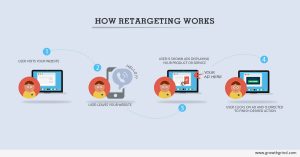
All you need to do then is convince them that they need your product – with the help of retargeting!
By using retargeting, you place a line of code on your site that tracks your visitors. When they’ve visited your website, you can then create a target audience in Instagram or Facebook ads, for example, and only show your ads to those people.
This is something you cannot do with your regular billboard ads. Should you stalk people who have been inside your store and hold a billboard in front of them?
Doesn’t sound like a very good strategy, does it?
23. Find your target audience
Social media is great for finding your target audience and learning more about them. There are tons of ways you can find your target audience on social media including both ads and organic detective work.
The best part is that there is so much information that you can extract from social media, making target audience identification super easy.
24. Get access to industry news
More than two-thirds of American adults — 67 percent, to be exact, “get at least some of their news on social media,” according to new data released by Pew Research Center. That’s up from 62 percent of American adults in 2016.
There is so much more than selfies and food pictures on social media, and you need to treat it like that.
On social media, you can get the latest news about events and changes in your industry and then take action accordingly.
If an event happens, you often hear about it on social media first. Just think about the terror attack in Nice. Within a few seconds, people had reported about the attack on social media, but it wasn’t until minutes after that the press caught up.
Therefore, if you want to stay on top of the latest happenings and events in your industry as well as outside of it – use social media.
25. Get ideas from your audience
Your audience will tell you a lot of things if you just take the time to listen. People are constantly talking about brands on social media, but surprisingly few see the value of listening.
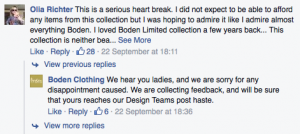
Social listening is tremendously valuable as it gives you tips and ideas without having to ask for them. People love to share their ideas and thoughts with brands – as long as they listen. Some brands listen and then don’t do anything with the valuable information they just got from a loyal and apprehensive supporter.
Of course, it is impossible to execute on every single tip you get, however, it’s kind of funny of some brands are sitting in meetings trying to come up with new ideas when suggestions are right in front of their nose.
When you show that you value what your audience is suggesting, or better yet, taking their tips and executing upon them, you’ll make them even more engaged as they feel listened to, and they’ll feel like what they are saying is valuable – which it was, because you used it!
The reason why you show them that they matter is that there are few things that show them that you care about them as integrating one of their ideas in your brand.
The best part?
When you show others that you actually listen to your audience and that you even use their ideas, more people will want to be a part of the discussion and come up with suggestions.
26. Learn how to improve your business
Your customers can tell you a lot. In fact, they are the ones who are using your products or services day in and day out, and if they find something they don’t like about your service, product, or brand, they’ll often take it to social media to share their opinions and experiences.
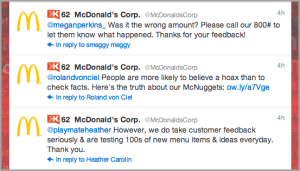
As mentioned earlier, it is difficult to spot your own flaws, but for someone else, it is easy.
It may sound harsh, but if you see it from another angle, an angle that tells you that the information you’re getting from your audience and current customers is actually valuable and can help you become a better business, then you’ll actually be happy to listen to what they have to say.
Your goal should be to always improve, and normally, you do it through surveying your customers, but on social media, you don’t have to because they’re already telling you what they think – saving you both time, money, efforts, and resources.
27. Grow Your Audience
The great thing about social media is that you can build a following which you can reach over and over again. If you run a TV ad, there’s no way for you to lead your audience to your brand and keep them glued to it, unless, of course, you’re asking them to join your newsletter in the television ad, something i wouldn’t recommend.
Social media allows you to identify your target audience, get people who are interested in your brand and industry to start following you, and then share content organically that allows you to remind them about you, as well as impact them without powerful content.
Focusing on building a loyal and engaged social media audience is an incredibly effective long-term strategy. Not only are they interested in your brand, and getting them to follow you is like paying for retargeting ads, while in reality, you’re just sharing organic content, as well as having followers that could potentially tell their friends about your brand. Different social platforms work differently in terms of acquiring followers, however, due to Facebook’s incredibly low organic engagement, it isn’t recommended that you put a lot of effort into building your audience there because what will end up happening is that you won’t be able to reach them when you share content organically. Instead, you’ll be better paying for ads.
However, on platforms like Instagram when the engagement is still quite high, you should definitely focus on building a large following. However, you should prioritiZe quality followers before quantity, because unless your followers are interested in your brand, or maybe just bots, they won’t do anything for your brand
You can learn how I have grown over 1 million followers in this guide.
28. Encourage conversations around your brand
As mentioned earlier, people talk about your brand on social media, however, sometimes, people might need an extra push and be encouraged to talk about your brand. What’s more, encouraging users to talk about your brand, even if you have a lot of people doing it will, of course, result in an even bigger spread, and even more conversations about you.
29. Use storytelling to share your brand’s story
You’re probably already familiar with storytelling and how effective it is in marketing, but did you also know that social media is one of the best places to use it?
It’s true!
Telling stories about your brand, or stories related to your brand will have a great impact on your brand’s image. By doing so, you’ll make your brand more relatable, and make people more emotionally connected.
30. Boost your brand’s reach with influencers
Influencer marketing has exploded in popularity over the years.
The simple explanation to why?
Because it generates kick-ass results!
Just look at these statistics:
- Influencer marketing content delivers 11X higher ROI than traditional forms of digital marketing.
- 6 in 10 follow advice from their favourite creator on what to buy over recommendations from celebrities.
- 49 percent of consumers rely on influencer recommendations.
- 92 percent of consumers trust recommendations from peers on social media above all other forms of advertising.
Before social media there were only celebrity influencers, but as social media came, it opened up the opportunity for virtually anyone to build their influence on social media and become an authority in their industry.
And because influences build a strong relationship with their audience, their recommendations tend to be a lot more trusted, and have a greater impact than celebrities’.
31. Make Content Go Viral
On social media, you have an opportunity to go viral like no other place.
What does viral mean?
It means that your content is shared and spread like a wildfire across social media’s every corner. The term viral has become overused and a buzzword which people use to describe a piece of content that get 5 shares, but the real meaning is a lot greater than that.
The key to going viral is, of course. producing captivating and high-quality content, however, it is social media that makes vitality possible as it allows people to share content with the press of a button. How did you go viral back in the days?
By handing out a million flyers?
Not really ideal, right?
When something goes viral, it creates a snowball effect, which means that one person sees your content, shares it with all their X number of followers, which in turn sees your content and in turn shares it will all of their followers.
As you can imagine, going viral can go quickly, and your content can gain traction in a matter of hours, maybe even minutes!
Many people are trying to find the ”secret” t going viral, but I am sorry to tell you that there is no such thing. It’s just about posting the right type of content at the right time, everything else is guess and luck.
When you go viral, as you can imagine, you can gain incredible results. You’ll be able to reach hundreds of thousands, maybe even millions of followers all with the help of people and organic reach – without having to pay a single dollar for it.
The result is, of course, tons of new followers as well.
31. Provide exceptional customer Service that improves your retention rate
Customer service is crucial for businesses on social media. Customer service is also part of engaging your audience, which I have mentioned, is crucial for success.
Many people turn to social media for customer services and they expect rapid and great service. When you give them that, they’ll become more loyal of your brand and there’s a big chance that they’ll return.
What’s more, people also tend to tell their friends about great experiences with brands. This also goes for bad experiences.
Therefore, you need to ensure that you have the resources needed to provide your customers with great and quick customer service on social media before digging into it.
32. Generate conversions
Social media can drive tons of traffic. We’ve already discussed that. However, the truth is that unless you get the traffic to do something, it won’t do much for your brand.
Ultimately, your end goal is to get them to convert, right?
A conversion doesn’t necessarily have to be a sale, but it can be a newsletter signup, a contest entry, or even just an email to you. But all of these things bring the customer further down your conversion funnel, thus increasing the chance of them buying from you in the end.
A great way to take advantage of your traffic is to add a clear call to action, or incentivizing them to complete a certain action.
Setting up campaigns such as a sale are also known to result in a higher conversion rate.
33. Promote your content
Social media is the king of content promotion.
There’s a reason why every clever website has integrated social media share buttons on their website. To encourage you to share their posts and give them a broader reach!
But there’s also a reason why they themselves use social media, and an important reason for it is to promote their brand. And as I mentioned above, you can promote your content completely for free using social media marketing and relying on organic reach.
When creating content, the single most important thing is obviously to create high-quality content, however, you also want to create content that stands out. A 2011 study by AOL/Nielsen showed that 27 million pieces of content were shared every day, and today 3.2 billion images are shared each day.
On Instagram alone, over 95 million photos are shared daily.
This means that it can be difficult for customers and potential customers to find your posts. However, due to the new algorithm, 70% of Instagram posts aren’t seen. Instead, Instagram’s algorithm focuses on the past page engagement and the relevance of the post when deciding who is going to see it.
The bottom line is that the competition for organic reach is incredibly tough, and in order to stand out, you need to create and share high-quality content.
34. Build hype around before a product launch
Social media is perfect for building up hype before a product launch, and it is a strategy that has been used by many – from Lady Gaga to Ford.
In fact, when Ford launched a new car, they built up hype by announcing that they were going to live stream the event, thus attracting tons of people once it was time for the product launch.
35. Use social proof to connect with potential customers
Whether you know it or not people are probably writing testimonials about your brand on social media
We’ve talked quite a bit about how people are talking about your business on social media, and a lot of what they are writing is social proof that you can use in your marketing. Their social proof is often stories of their own experience with your brand, and social proof tends to be a lot more trusted than if the brand itself stands there and preaches about how good they are. Because ultimately, people know that the brand has one agenda: to sell more.
Talia Wolf from GetUplift.co says this about social proof:
“Social proof is an important part of executing your landing page strategy. As customers, we buy products that make us feel good about ourselves, products that change us and make us better. By using social proof in the form of testimonials, reviews and trust icons you’re helping customers make a decision, feel confident about their choice, and a part of something bigger. The form of social proof that you choose can instigate different emotional triggers. Planned carefully, you can spark specific emotional triggers that influence customers’ feelings towards their purchase and your business.”
If people see that tons of people are customers of yours, and are satisfied with their purchase, they are more likely to buy from you.
The bottom line?
Take your time to listen to what your audience is saying, and incorporate the social proof you find in your marketing. Not only will this be more trusted, but the person who wrote the testimonial will also feel acknowledged and appreciated.
36. Get access to user-generated content
User-generated content holds tremendous marketing power, and it is quite similar to social proof.
Just like social prof, people are often sharing user-generated content when they are using your products. Just take a look at the hashtag #cocacola on any social platform and you’ll find hundreds of thousands, maybe even millions of customers of Coca-Cola who have bought their products. Interior company Hemtex uses social proof from social media by taking photos from their customers and sharing it on their website. Not only does this help them make their current customers more loyal, but it also gives them free content that holds more trust than if they would create the content themselves.

What’s more, they get to inspire other customers by sharing examples of how the products they are selling are being used by their current customers, creating a demand for the products in the posts.
37. Turn Employees Into Advocates
Employees are already loyal and engaged in your brand, and the only thing you need to do is ask them to share their experiences and thoughts on social media! This allows other people outside of your company to take part and realize how awesome you are!
A study from Shandwick found that half of all employees post messages, images, and videos on social media about their employers.
38. Allows for effortless A/B testing
A/B testing means that you set up different variations and versions of different campaigns, websites, ads, and more.
A/B testing can be used for social media as well, and by tweaking and testing, you can find the content that performs best on your social media.
Many of the top social media platforms offer built-in analytics program that allows you to follow the results carefully.
39. Keep your customers up-to-date
Social media offers a way for you to closely engage and connect with your audience. It is an easy way to quickly share information and keep your audience up-to-date with the latest news. As a brand, you probably have a lot to tell your brands, and the more you tell and let your audience in on, the more engaged they’ll be in your brand.
40. Reduce your customer service staff
Social media is a great tool for customer service as you’ve probably realized by now. More and more people are turning to social media for customer service, having it as their preferred platform for customer service, and as a result, this means that you can decrease the number of people in your customer service staff by using social media instead. Tons of large corporations have realized this and made social media a natural part of their customer service. in fact, brands like Zara and H&M have created individual Twitter accounts solely dedicated to customer service.
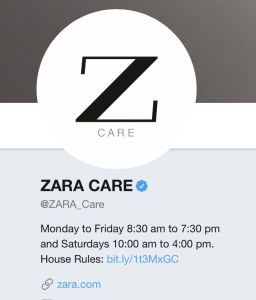
The reason?
They found it more valuable to listen to what people are saying about their brand on social media and then taking appropriate action – which most often meant responding to the people who had a problem and trying to make things right again.
50. Recruiting New Employees
More and more brands have started using social media for employee recruitment due to the fact of its simplicity and efficiency.
According to Jobvite, 59% of recruiters rated candidates found through social media as highest quality.
By using social media, you can find the best candidates for the job, and also look at the concrete things they’ve achieved and done to date.
51. Measure your results
As mentioned, many of the social media platforms have built-in analytics tools in the app that allows you to quickly measure the results of your efforts, but if they don’t, there are tons of third-party apps and programs you can use to do so.
The more you measure, the more you can fine-tune your message to generate better results, and this is something that traditional adverting gives very little opportunity to do.
How much information can you get about the results that a billboard that you paid thousands of dollars for drove? Not much, right? You won’t know what genders the people who saw it were, what ages they had, and if they even looked at it. You will get very little information about the billboard’s performance, but still, people are skeptical if social media marketing will drive results. A place where you get tons of information about the people you reach, and that offer even more targeting opportunities when running ads.
This is also a big reason to why social media is so effective. Brands can effortlessly measure their results and stop doing the things that aren’t working well and instead focus on the things that are.
52. Showcase company culture
Showcasing your brand’s company culture is a great way to make our brand more approachable and human. Often times, people buy into the feeling they get when they buy a product, not the product itself, and using social media, you can present your brand’s goal, vision, employees and behind the scenes to build a company culture that customers want to buy into.
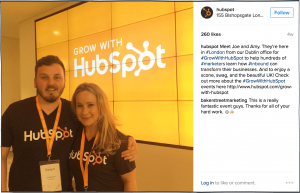
Luxury brands are often great examples of this. When you buy something, you buy the feeling of exclusivity.
53. Spark lead generation
A lead is a person who is likely to be interested in your product or service. The people who are most likely to buy your products or services are obviously people who are within your target audience, and therefore, it is essential that you first identify your target audience on social media and then go after them. In order to get leads, you need to make the people aware of your brand’s existence. This is what social media marketing strategies and campaigns are for.
54. Increase email subscribers
Social media marketing also has the power to generate email subscribers, but this means that you first need to get them to visit your website.
One of the best ways to create a social media contest where people have to sign up with their email to join. While email marketing is losing efficiency because more and more brands are using it, is still highly effective, and therefore, building your email list should be high up on your priority list. In fact, 91% of consumers use email every day.
A newsletter subscriber is considered to be a hot lead for your brand as they have already shown interest in your brand once. In other words, email marketing works as a way of retargeting your audience.
55. Your customers are using it
Far to often, I hear markets and CEOs skeptical about social media say “but my target audience isn’t there” but the truth is that most of the time, that argument isn’t true because in fact, their target audience is actually using social media.
Sure, if your target audience consists of 80+ year-olds, you’ll probably be better off using other marketing methods, but take a look at this visual to better understand the demographics of social media users:
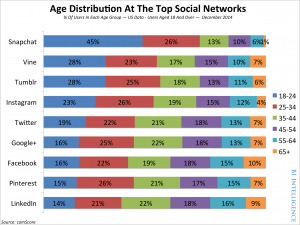
56. Consumers are checking out your brand on social media
Did you know that 68% of consumers check out a company’s social media presence before buying online?
Well, that statistics alone should tell you that you need to be using social media.
If you’ve just create an account just to let it die, it sends signals that your brand isn’t up an running and it might scare the potential customer away.
If you aren’t even to be found on social media?
Even worse.
Consumers are doing more and more research before buying, and social media is many customers’ main research platform, and by having a strong social media presence, you can encourage them to buy from you.
57. You Don’t have to be too promotive
The traditional way of thinking of marketing is to shove so many ads down your customers’ throats until they can’t breathe and then buys from you just to get rid of you. But social media is a bit different.
People aren’t on social media because they’re super excited to see ads. In fact, it’s more of the opposite.
The key to driving great marketing results on social media is providing value to your audience so that they’ll actually want to be close to you and engage with your brand. And when they are ready to buy from you, they’ll automatically think of your brand.
Studies have found that consumers don’t want to be sold to anymore. Instead, they want to be educated about brands and products and then make choices based off of that. Luckily, that’s exactly what social media allows you to do.
The more educated your prospects are about your product, the more likely they are to buy from you.
By posting informative content that brings your audience value, you’ll be able to educate them to the point where they want to buy from you.
58. Answer customer questions
Customers have a lot of questions, and as social media is becoming many people’s preferred platform for brand contacts, the often turn to social media to get answers to their questions. But if your brand isn’t responding to their questions, there’s a great risk that they’ll go somewhere else.
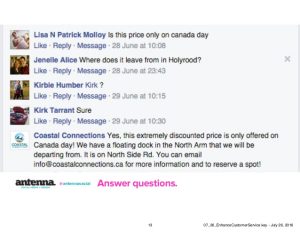
And that somewhere else might be your competitors.
Be ready to respond every single question you receive on social media and you’ll increase the chances that they’ll buy from you.
59. Lower Customer Acquisition cost
The cost of customer acquisition is calculated to be a lot lower than traditional marketing methods, which isn’t that strange considering how ineffective the targeting of traditional ads. And with everything I’ve told you about how great social media is for customer identification and targeting, you can expect it to be super cost-effective.
In fact, a study has found that inbound marketing leads cost 61% less than outbound
60. Repeat Customers
On average, it costs 4 to 10 times more to acquire a new customer than to keep a current one. Therefore, a lot of your focus should towards keeping your current customers and making them return customers rather than acquiring new ones.
When you are using social media, you can reach your existing customers over and over, keeping your customers always thinking about your brand. What’s more, you also keep them up to date with new releases and products that they might be interested in buying now that they’re satisfied with the first product they bought from you.
61. Show your brand’s personality
It is difficult as a brand to show your personality, don’t you think?
And it was especially difficult to show your brand’s personality before social media.
Social media has opened up a completely new world for brands to show their brand personality, and it is something that all brands should pay attention to.
All brands have a personality whether you know it or not. Even yours! Even if you haven’t developed your brand message or defined what personality you should have.
And if that is the case, the personality of the social media manager is often shining through.
Having a personality is essential for success. Obviously, you want to fine-tune and tailor your brand’s personality based on your target audience.
If you’re targeting teens, you should have a different personality than if you’re targeting 60+ year-olds.
Defining your personality and sticking to it consistently will make your brand more approachable, and you’ll also have an easier time appealing to your ideal audience.
Don’t you agree that you have an easier time relating people who are similar to ourselves than people who are completely different?
Well, studies have proven just that, and obviously, you want to take that information and incorporate it into your social media marketing to drive better results.
Some brands and marketers say that ”but I am in a boring industry, I cannot have a personality” but that couldn’t be further from the truth. In fact, being boring and conservative as a brand is a personality, and if you feel like that’s the way your target audience will best resonate with you, then that’s the personality and brand voice you should opt for.
62. Organic marketing through your audience
A huge benefit of social media marketing is that you can get your audience to market your brand for you!
This means asking them to share your content, talk about your brand on their website, or mention you to their friends through word-of-mouth.
There are tons of people who are on social media, including bloggers and journalists looking for the next big scoop, and if you can convince them that you’re brand is interesting enough, as well as share high-quality and appealing audience, you can get a ton of free marketing.
Remember that I mentioned that people are talking about your brand whether you want it or not?
Well, it is said that all exposure is good exposure, and everytime people talk about your brand on social media, there will be more people who see their post and becomes aware of your brand.
Maybe they’ll even check you out and start following you.
If you receive negative complaints, you shouldn’t just leave it at that, because I don’t completely agree that all exposure is good exposure. However, if you can respond to the disgruntled customer in a good way that shows your re doing everything you can to solve their problem and make things right again, people will see it and see you in a positive light.
63. Build relationships with authorities in your industry
Social media is an excellent place to build relationships with authorities in your industries. This means industry leaders as well as influencers. Having these relationships is important for many reasons, but we cannot forget that in order to do so, you first need to have something to bring value to them, and then engage with them on a regular basis.
Relationships aren’t built in a day. Especially not with busy industry leaders.
When you have built relationships with authorities in your industry, you can get in touch with them and ask them for something. But whatever you do, avoid using them or taking advantage of them. Your relationship should be a win-win relationship where none of the parts feel like they’re being used, but instead benefit from the partnership.
When you have contacts with influencers in your industry, for example, you can approach them for a potential partnership where they promote your brand, and when you do, they’ll be far more likely to say yes because they’re already super excited about your brand and because they want to help you out because they see you as their friend.
Moreover, they might even offer you the promotion for free or a reduced cost.
Relationships on social media have many benefits! You just need to explore how you’re going to use them and provide value to them at the same time.
64. Learn More About Your Audience
I’ve spoken about how much information there is to access about people on social media, and that’s great for targeting them. However, it is also great for getting to know your audience better so you can target them even better in the future-
Why?
Because when you know your audience, who they, are, what personality they, have, what makes them laugh, what makes them cry, you can tailor your message and fine-tune your content to better suit their preferences – thus helping you generate better results.
65. Reach your audience where their focus is
Considering how many users there are on social media, there is no denying that people’s attention is. When you are marketing your brand, you’re seeking attention.
Your target audience’s attention is on social media, so obviously, you want to use social media to catch the attention of your target audience!
As Entrepreneur Gary Vaynerchuk puts it:“The currency of business is attention”.
66. Social media is free
The truth is that social media can be free if you want it to, but it can also cost a lot. But due to its ability to create laser targeted ads, it tends to drive a higher ROI than your invested money, which means that you seldom lose money if you have a strong strategy and plan.
If you want, you can live off of organic reach and still generate incredible results, and there’s nothing wrong with that! Just make sure you develop a strong and clear social media strategy that tells you exactly how you’re going to generate the best results possible through organic reach.
Of course, social media demands time and effort even if you’re focusing on organic reach, but considering the statistics that social media marketing is able to show for, it will be well worth the investment long-term. You just have to realize that nothing comes overnight. Social media marketing is a process.
67. Build trust
When you build relationships with your audience, you build trust. And as you know, when your audience doesn’t trust you, they won’t buy from you either.
Therefore, social media is a tremendously effective tool when it comes to engaging and increasing your audience’s trust in you.
In fact, a study of the impact of social media on consumers founds that when people trust your brand, they tend to find your service and product more useful, this leading to an increased intent to buy from you.


